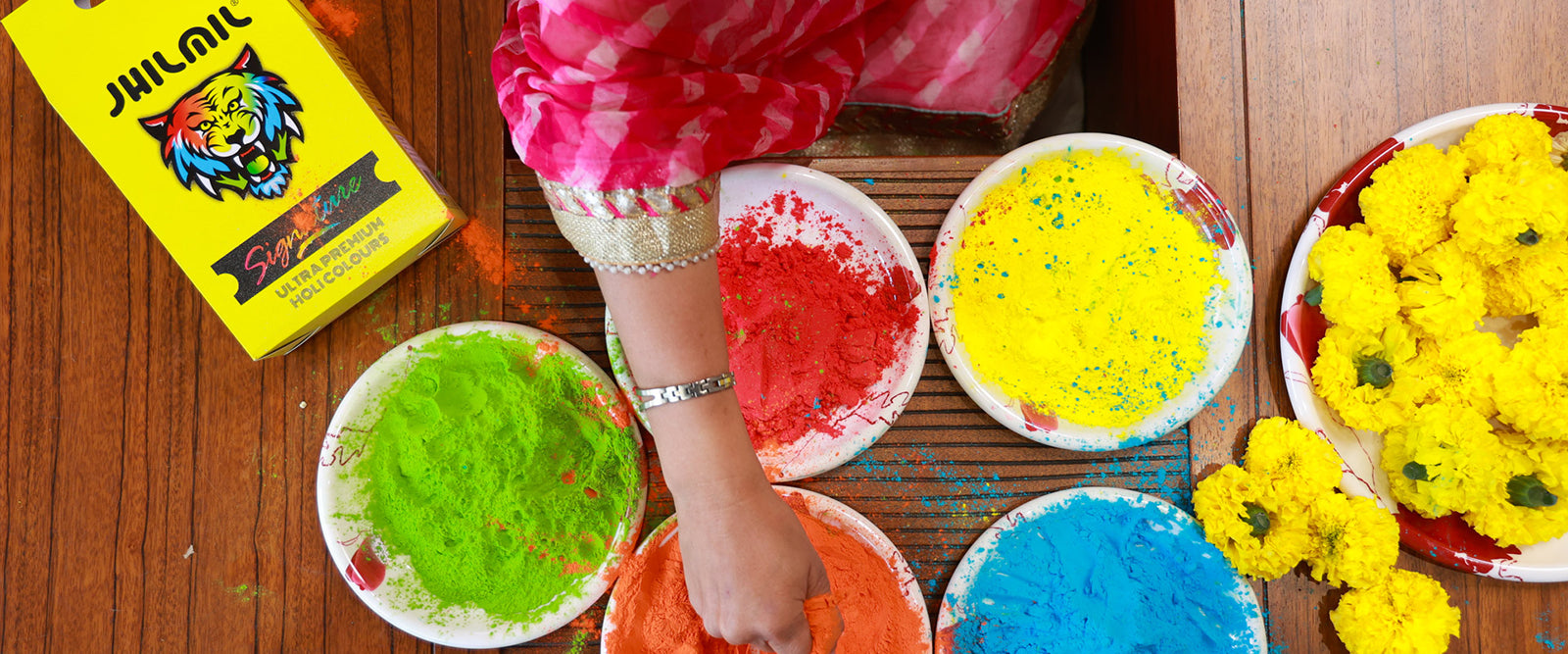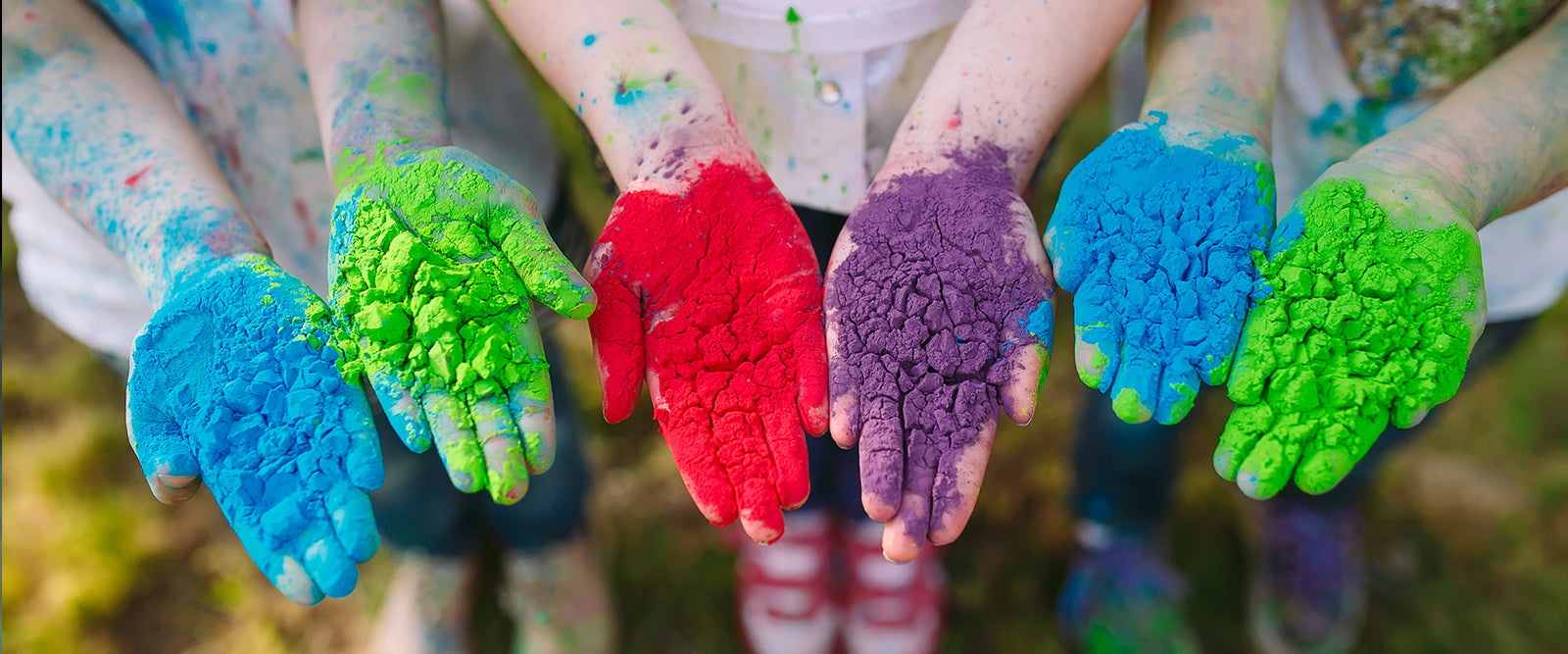
Unveiling The Rich Symbolism Of Holi's Vibrant Colours
Have you ever been dazzled by the explosion of colours during Holi, the vibrant festival celebrated in India? But behind the rainbow hues lies a deeper meaning, a rich tapestry of symbolism woven into Indian culture and tradition. Let's embark on a colourful journey to unveil the hidden significance behind each shade and discover the true essence of Holi in India!
Holi In India: A Timeless Legacy Dipped In Colours
Holi in India, the vibrant festival of colours, is more than just a joyous spectacle. Its roots delve deep into the country's rich history, stretching back centuries. While the exact origin remains shrouded in some mystery, two prominent stories paint the genesis of Holi festival India.
-
One narrates the triumph of good over evil, where the pious Prahlada defies his demon king father, Hiranyakashipu. The symbolic bonfire, known as Holika Dahan, marks this victory.
-
Another legend whispers of the playful love story between Radha and Krishna, where colours became their language of affection.
Regardless of the specific legend, Holi in India has evolved into a celebration that transcends religious boundaries, painting a unified picture of cultural inclusivity.
Today, it signifies the arrival of spring, the shedding of winter's gloom, and the blossoming of new beginnings. So, as you prepare to drench your loved ones in vibrant hues, remember that each colour whispers a story, echoing the rich history and enduring legacy of Holi in India.
Why Is Holi Celebrated With Colours? Significance Decoded!
Let's delve into the deeper meaning behind celebrating Holi with vibrant colours, thereby understanding why it is rightfully known as the "Holi Festival of Colors" in India.
-
Victory of Good Over Evil: The burning of Holika signifies the triumph of good over evil. Throwing colours represents the vanquishing of darkness and negativity.
-
Spring's Arrival: Holi marks the end of winter and the blossoming of spring. The vibrant colours symbolise the renewal of life and the abundance of nature.
-
Celebrating Equality: During Holi, social hierarchies dissolve as everyone plays with colours, blurring social distinctions and fostering brotherhood.
-
Expression of Joy and Love: The playful exchange of colours signifies joy, merriment, and the strengthening of bonds between friends and family.
-
Krishna's Divine Play: According to legend, Lord Krishna played Holi with Radha and his friends, establishing the tradition of playful colour throwing.
Understanding The Significance Of Different Popular Holi Colours
Now that we've explored why Holi is celebrated with colours, it's time to uncover the holi colours meaning! Throughout Holi festivities, various colours such as red, yellow, orange, etc., are used for different activities. Let's delve into the diverse meanings behind these Holi colours.
1. Red
In the palette of Holi colours, red holds a special significance symbolising love, passion, and fertility. It embodies the warmth of emotions and is associated with various Hindu deities, including Goddess Durga and Lord Hanuman. Red is also reminiscent of the spring season, signifying the blossoming of new beginnings and the vitality of life.
2. Yellow
Yellow, the colour of sunshine and joy, adds a radiant touch to Holi celebrations. It symbolises auspiciousness and prosperity, often associated with the revered spice turmeric. Yellow also represents the ripening of crops and the onset of abundance, marking the arrival of the harvest season.
3. Blue
The colour blue evokes a sense of calmness and serenity amidst the vibrant chaos of Holi festivities. It is closely linked with Lord Krishna, a central figure in Hindu mythology known for his playful nature. Blue symbolises divinity and transcendence, reflecting Krishna's divine essence and his enduring love for Radha.
3. Blue
The colour blue evokes a sense of calmness and serenity amidst the vibrant chaos of Holi festivities. It is closely linked with Lord Krishna, a central figure in Hindu mythology known for his playful nature. Blue symbolises divinity and transcendence, reflecting Krishna's divine essence and his enduring love for Radha.
4. Green
Green, the colour of nature and renewal, mirrors the lush foliage of spring and the promise of growth and prosperity. It signifies harmony, balance, and vitality, embodying the rejuvenating spirit of Holi. Green also holds cultural significance, representing the harvest and the abundance of crops.
5. Pink
Pink, with its soft and delicate hue, represents affection, tenderness, and compassion. It exudes a sense of playfulness and innocence, adding a touch of sweetness to Holi festivities. Pink symbolises the joy of companionship and camaraderie, fostering heartfelt connections among participants.
6. Orange
Orange, a vibrant and energetic colour, infuses Holi celebrations with warmth and enthusiasm. It symbolises creativity, vitality, and spiritual awakening, reflecting the transformative power of the festival. Orange also represents the sacred fire, symbolising purification and the burning away of impurities.
7. Purple
Purple, a regal and majestic colour, adds a touch of grandeur to Holi festivities. It symbolises wisdom, dignity, and introspection, inviting participants to reflect on the deeper meanings of the festival. Purple also represents spirituality and mysticism, encouraging individuals to embark on a journey of self-discovery and inner growth during Holi.
Ending Note!
This year, let's celebrate Holi with the true spirit of its vibrant colours! Go beyond just the fun and delve into the rich symbolism they hold. Each splash of colour isn't just playful, it's a story waiting to be unfolded.
Experience the true essence of India this Holi with Jhilmil's organic colours. Made with the love of nature, these vibrant hues carry the deep roots and rich culture of our land. Every shade, crafted from flowers and other natural ingredients, reflects the true spirit of this joyous festival.
Join the celebration, embrace the symbolism of holi colours, and paint your Holi with the colours of joy, unity, and cultural richness. Choose Jhilmil Colours and make your Holi truly unforgettable!
Frequently Asked Questions On Holi Colour Symbolism
1. What do the colors represent in Holi?
Ans: The colours in Holi represent various emotions and aspects of life, such as love, passion, fertility, auspiciousness, prosperity, divinity, renewal, playfulness, affection, tenderness, creativity, vitality, purification, wisdom, and spirituality.
2. How is color symbolism significant in Holi celebrations?
Ans: Colour symbolism is significant in Holi celebrations as it adds depth and meaning to the festivities. Each colour carries its own symbolism, reflecting different aspects of life, nature, and culture. The playful throwing of colours symbolises the breaking down of barriers, the triumph of good over evil, and the fostering of unity, equality, and joy among people.
3. Why are colors important in Holi?
Ans: Colours are important in Holi because they serve as a visual representation of the festival's themes and messages. They symbolise various emotions, virtues, and elements of nature, enriching the celebration with layers of significance and cultural depth. The vibrant hues also add to the festive atmosphere, creating a sense of joy, excitement, and camaraderie among participants.


